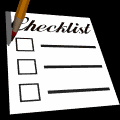
Parents have the right to ask their child's public school for an evaluation and by law, the school must provide one free of charge. But there are steps that must be followed.
STEP ONE: Parents must make a request for testing in writing. Talking to your child's teacher, the principal or the front office about your concerns, or just verbally asking for an evaluation is not enough. Parents need to put the request in writing and personally deliver it to the school personnel (usually the school counselor) who should respond to it. According to Vita Nemirovsky of Homeworks Educational Consulting, it is important to include specific requests in the letter on exactly what you would like your child to be evaluated for. A sample letter requesting evaluation will help parents write an effective letter.
STEP TWO: Within 10 days, the school will offer a Permission to Evaluate (PTE) form that needs to be signed by the parents. At this point, a 60 day “countdown” starts, where the school has that much time to perform the requested evaluations. One thing to note: the time during summer vacation does not count towards the 60 days. Despite the fact that it may be late in the year, it can still be good to start the process in the spring. According to Nemirovsky, that will help set things up for an early fall evaluation.
IF THE SCHOOL SAYS NO: A school may also respond to a parents’ written request with a Notice of Recommended Educational Placement, or NOREP form. This form indicates that the school has reviewed the child’s situation and determined that he already has an appropriate placement. Parents can dispute this and still request testing. In the majority of the cases, the schools will comply with the parents.
STEP THREE: Once testing results are in, the school will meet with the parents, share results and make recommendations. If parents are not satisfied with the results of testing, they also have the option of requesting an independent evaluation, which the school is required to pay for.
The lengthy time frame can be a problem for some parents, who want to get a diagnosis, and begin to get help for their child sooner. These parents may elect to pay for and get an independent evaluation.
Next: Reasons to consider an independent evaluation






 RSS Feed
RSS Feed